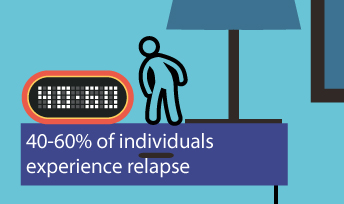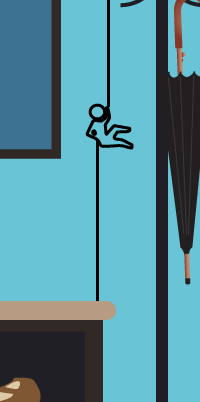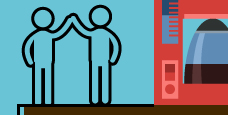An Important Step in Recovery From Addiction
Following the completion of an in-patient drug rehabilitation program, a transitional living program is an important next step in the journey to long-term sobriety. Transitional living programs promote safety, stability and well-being for individuals who are transitioning out of in-patient treatment centers, but may not yet be ready to live entirely on their own.
While there are many approaches to transitional living, in general, the goal of these programs is to help individuals successfully reintegrate into their lives after in-patient drug rehabilitation treatment.
Transitional living programs provide support for individuals to repair damaged relationships with family and loved ones, assist individuals with job training and job placement, and, most critically, help individuals develop clear and realistic post-treatment recovery plans.
What is Transitional Living?

Transitional living facilities are group-oriented housing where individuals must adhere to a curfew and a strict substance-free policy. Participants in transitional living must also participate in counseling and regular group treatment meetings.
In return, individuals receive a temporary place to live while they continue treatment, complete a degree or obtain work, and develop life skills. Transitional living stresses relapse-prevention tactics and may offer job counseling, life skills courses, GED assistance and other benefits.
How Long is the Program?
The length of stay at transitional living homes may vary from six months to 18 months or longer. Transitional living homes may range in size from smaller centers of 15 to 20 people to larger homes with 30 to 40 participants.
Transitional living homes typically provide two daily meals along with other amenities of home, such as laundry facilities and shared recreational facilities. The goal of transitional living facilities is to provide a supportive, nurturing environment where individuals can learn how to live a life free from alcohol and other drugs.
The Need for Transitional Living:
Reducing the Risk for Relapse

Alcoholism and drug abuse can have a serious impact on an individual’s well-being. Because of their addiction, many individuals may lose their home, job and finances, as well as alienate friends and family. Consequently, adjusting back to life in the real world can be a serious struggle, especially if an individual lacks a safety net.
Setbacks finding a job, a disagreement with a close friend or family member, or another stressful situation can tempt individuals to begin using again. For individuals in recovery, building and maintaining a sober and independent life can be a very difficult task. Transitional living assistance helps reduce the risk of relapse and is essential to long-term, successful recovery.
According to the National Institute on Drug Abuse, between 40 and 60 percent of individuals who are addicted to drugs will experience a relapse. (1) Most treatment admissions (41.4 percent) involved alcohol abuse; heroin and opiates accounted for the greatest percentage of drug-related admissions, 20 percent. (2)
The Initial Addiction Treatment is Simply Not Enough
Seeking treatment is an important first step to living a healthy, sober life. However, with some treatment relapse rates as high as 60 percent, a 30-day program is simply not long enough for all individuals to successfully get back on track to sobriety and stay on this path. An inpatient treatment center is very different from the “real world.”
In this safe, controlled environment, there are no temptations to use drugs or alcohol and everyone in the program is completely supportive of the individual’s recovery. All the individual needs to do is focus on getting healthy; stressors like finding a job, dealing with friends and family, and managing finances do not exist.
Consequently, once individuals leave a rehabilitation program, readjusting to a life of sobriety can be a significant challenge. This is especially true for individuals who lack the life skills or healthy coping mechanisms to deal with finding a job, completing a school degree or making peace with friends and family.
Using Life Skills to Prevent Relapse
Transitional living and life skill classes are very important for reducing the risk of relapse. It is not enough to simply help an individual withdraw from drugs or alcohol. This individual must also be given the tools to rebuild his or her life, resist the temptation of future substance abuse, and stay committed to sobriety. Transitional living programs are designed to do just that.
Transitional Living for Dual-Diagnosis

Dual-diagnosis, also known as co-morbidity, is a condition in which an individual is diagnosed with two or more disorders or illnesses. These conditions frequently occur at the same time, and often interact to worsen the course of both.
According to the National Institute on Drug Abuse (NIDA), addiction fundamentally changes the brain, disturbing an individual’s normal hierarchy of needs and desires. A “re-prioritization” of desires, needs and wants occurs due to drug use. (3)
According to the NIDA, for some individuals, drug abuse may bring about symptoms of another mental illness, while for other individuals, mental disorders can lead to drug abuse. Individuals who suffer from anxiety or depression may turn to alcohol or other drugs to alleviate these symptoms.
Many of these disorders are shared by overlapping risk factors, which include genetic vulnerabilities that predispose certain individuals to addiction; overlapping environmental triggers (e.g. stress, trauma or sexual abuse); and the involvement of similar brain regions for reward and stress.
Individuals who have been diagnosed with co-occurring disorders are at greater risk of relapse if both conditions are not effectively treated. Selecting a transitional living facility that is specially dedicated to addressing co-occurring disorders can make a significant difference in the success of an individual’s long-term sobriety.
The staff at a transitional living facility can help ensure that individuals continue treatment, whether this is therapy, group counseling or medications specifically for mental health disorders.
Transitional Living Benefits
Transitional living facilities offer a number of important benefits for individuals who have completed an inpatient treatment program. Transitional living facilities provide the structure and accountability that is critical for maintaining sobriety and successfully transitioning back into the real world.
Transitional living benefits include:
-
Life skills development
Transitional living programs may offer “Life Improvement” or “Life Skills” development courses that are designed to teach participants new patterns of thinking and behavior while supporting self-improvement. These courses may range from financial planning to problem solving. Life skills development helps individuals to formulate goals, identify their purpose and create a constructive plan that supports a sober life.
-
Support for dual-diagnosis

Some transitional living facilities are specifically designed to help individuals who have been diagnosed with co-occurring disorders (also known as co-morbidity) such as drug addiction and a mental health issue like depression.
-
Assistance finding a job or completing a degree
Some transitional living programs include job-finding assistance, including help in developing a resume and completing GED courses that will equip participants with the skills to succeed professionally. Transitional living programs may offer problem-solving and creative-thinking courses that challenge participants to think differently about the world. These job-assistance classes prepare individuals to succeed academically and professionally.
-
Emotional support
Transitioning back to real life can be extremely challenging. In the past, individuals may have turned to drugs or alcohol to manage their anger, fear or depression. Transitional living centers emphasize relapse prevention through regular group meetings.
These meetings are an opportunity for individuals to discuss the challenges they face each day in a safe, supportive environment with other individuals who understand and share these difficulties. These group counseling sessions are also designed to equip individuals in recovery with the emotional resources to confront and manage challenging situations in a constructive manner, rather than turning to substance abuse.
-
Accountability
Individuals who are living in a transitional home are held accountable for their behavior and actions. They must maintain their sobriety in order to stay in the home; as a result, many homes mandate weekly drug tests.
Furthermore, individuals are required to participate in group counseling sessions, complete household chores and take on the responsibilities of being a constructive community member. Individuals who transition out of inpatient care often respond better to the accountability imposed by a transitional home than they do to requests, pleas or demands from friends and family.
Transitional Living: Next Steps
Transitional living is part of a smart approach to recovery focused on hope, opportunity and achievement. If you are or a loved one is considering transitional living, it is important to find the right program that will meet your needs. Just as with rehabilitation centers, not all transitional living programs are based on the same treatment philosophy. Some programs focus specifically on the 12-step model, which is based on Christian teachings and principles.

This program is a set of guiding principles that includes the following:
- Admitting that one cannot control one’s addiction or compulsion
- Recognizing a higher power that can give strength
- Examining past errors with the help of a sponsor (experienced member)
- Making amends for these errors
- Learning to live a new life with a new code of behavior
- Helping others who suffer from the same addictions or compulsions
If an individual has previously participated in an inpatient rehabilitation program based on a 12-step method, he or she may find it beneficial to continue the program at a transitional living facility.
Traditional and Alternative Options
Some transitional living programs may embrace both traditional rehabilitation programs, like the 12-step method, and alternative or holistic therapies. These programs may offer daily yoga and meditation classes and martial arts, along with access to alternative therapies such as acupuncture, Reiki or art therapy.
The philosophy and spiritual aspects of traditional mind-body activities, such as yoga and martial arts, can bring calm to the mind during the recovery process. Many individuals who are in recovery are also struggling with the painful emotional fallout from their substance abuse.
This fallout may be in the form of broken families, lost friends, divorce or damaged careers. Mind-body therapies are one tool that can help individuals constructively work through feelings of depression, hopelessness, guilt or loss without turning to drugs or alcohol.
Faith Based Programs
When choosing a transitional living facility, individuals may wish to consider what role, if any, they would like religion or spirituality to play at the facility. Some transitional living homes are closely aligned with a specific faith. The 12-step Alcoholics Anonymous and Narcotics Anonymous programs, for example, are recovery programs that are closely based on Christian principles and teachings.
Other transitional living centers are open to a variety of religious and spiritual practices, which could range from Eastern faiths like Buddhism to Western faiths like Christianity and Judaism. Most transitional living homes are welcoming of all faiths and encourage individuals to explore their spirituality and religion as part of the healing process.
These homes respect each individual’s right to believe what he or she wishes and provide support through the recovery process.Some rehabilitation and medical centers offer transitional living programs as part of their comprehensive approach to substance abuse treatment.

If an individual’s current facility does not offer a program, or the transitional living home is not in a convenient location for an individual’s needs, talk to a substance abuse counselor about the different options that are available in the local community.
Hope Through Transitional Living
Recovering from a drug or alcohol addiction is one of the most challenging and difficult experiences that anyone will face. The recovery process can be compounded by a lack of support from friends and family” even if these individuals mean well.
Leaving a sober living treatment center and returning to a house where friends or family are freely using drugs or alcohol can be extremely difficult and emotionally taxing. A transitional living center is a safe place to be away from the temptations of drugs or alcohol and to stay focused on the recovery process.
We Can Help
Recovery will not occur overnight; even after successfully completing a treatment program, there will still be many temptations and setbacks along the road to sobriety. The support, structure and safety of a transitional living home like Blu By the Sea’s will help make the path to a sober life easier and more attainable. Contact us today for more information on these and all of our programs offered.
Sources:
(1) From Molecules to Managed Care
(2) Treatment Statistics
(3) Comorbidity: Addiction and Other Mental Disorders

